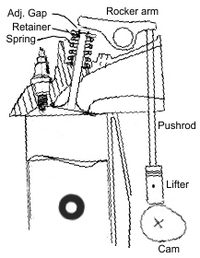Eric in Seattle
New User
Hello community...I recently started diving into my new-to-me
1959 Farmall 560. I noticed last time I started it up to take it into
my garage for the winter to work on it, give it a tune up...etc...that
it started popping really loud up towards the front of the tractor
like the engine was popping. Over and over again. And the
hydraulics for the loader and the back scraper blade both lost a
ton of power...and then all of a sudden would get it back. So I got
the loader and the blade up enough long enough to get it inside.
So...totally a new tractor owner and non-engine guy here
talking...anyone have any ideas what I need to do? Why would it
suddenly start doing this? It also died on a me a few times during
the process as well.
I am also looking for a great instructional
guide/video/internet/printed guide that would be good for a
tuneup to be done? I would like to do an oil change, hydraulic
fluid change, and tune up. But am not sure where to start and
have never done it before.
I have only owned the tractor for a few months. it's my first one
for my first acreage/land purchase of my life. So I love the old
beast...I just need to learn how to use it and fix it.
1959 Farmall 560. I noticed last time I started it up to take it into
my garage for the winter to work on it, give it a tune up...etc...that
it started popping really loud up towards the front of the tractor
like the engine was popping. Over and over again. And the
hydraulics for the loader and the back scraper blade both lost a
ton of power...and then all of a sudden would get it back. So I got
the loader and the blade up enough long enough to get it inside.
So...totally a new tractor owner and non-engine guy here
talking...anyone have any ideas what I need to do? Why would it
suddenly start doing this? It also died on a me a few times during
the process as well.
I am also looking for a great instructional
guide/video/internet/printed guide that would be good for a
tuneup to be done? I would like to do an oil change, hydraulic
fluid change, and tune up. But am not sure where to start and
have never done it before.
I have only owned the tractor for a few months. it's my first one
for my first acreage/land purchase of my life. So I love the old
beast...I just need to learn how to use it and fix it.


